First published in 2015 by Left Coast Press, Inc.
Published 2016 by Routledge
2 Park Square, Milton Park, Abingdon, Oxon OX14 4RN
711 Third Avenue, New York, NY 10017 USA
Routledge is an imprint of the Taylor & Francis Group, an informa business
Copyright 2015 by Taylor & Francis
All rights reserved. No part of this publication may be reproduced, stored in a retrieval system, or transmitted in any form or by any means, electronic, mechanical, photocopying, recording, or otherwise, without the prior permission of the publisher.
Library of Congress Cataloging-in-Publication Data
Sokolovsky, Jay.
Indigenous Mexico engages the 21st century : a multimedia-enabled text / Jay Sokolovsky.
pages cm
Includes bibliographical references and index.
ISBN 978-1-62958-174-3 (hardback)
ISBN 978-1-62958-175-0 (paperback)
ISBN 978-1-62958-177-4 (consumer ebook)
1. San Jernimo Amanalco (Mexico)Social conditions. 2. Indians of MexicoMexicoSan
Jernimo AmanalcoSocial life and customs. 3. Indians of MexicoMexicoSan Jernimo
AmanalcoRites and ceremonies, 4. GlobalizationSocial aspectsMexicoSan Jernimo
Amanalco. 5. AnthropologyFieldworkMexicoSan Jernimo Amanalco. I. Title.
II. Title: Indigenous Mexico engages the twenty-first century.
HN120.S25S64 2015
306.097252dc23
2014047037
ISBN: 978-1-62958-174-3 (hbk)
ISBN: 978-1-62958-175-0 (pbk)
ISBN: 978-1-31542-673-0 (eISBN)
Cover Designed by Jane Burton

Set in the rugged mountains overlooking Mexico City, Indigenous Mexico Engages the 21st Century fuses text with a range of digital media to explore the contemporary lives and culture of San Jernimo Amanalcos residents. Our understanding of the community and its people, culture, and region is enhanced through Power Point learning modules and archival documents, audio, and video gathered through ethnographic research over the past forty years. These materials are not mere adjuncts to the written page but rather learning tools integrated into the fabric of the text.
A companion website at www.indigenousmexicobook.com enables print readers to access all the digital materials. Readers of the e-book edition can simply click on icons embedded in the text to gain access to these materials. Print edition readers can see the embedded icons but will need to log on to the website to have access to the digital materials. Such resources can allow readers to visually walk through Amanalco on Google maps,  witness a quinceaera ,
witness a quinceaera ,  listen to the sound of an Aztec Band
listen to the sound of an Aztec Band  and explore the activities of an exciting new cultural center, Centro Cultural Miyotl, with a Power Point module.
and explore the activities of an exciting new cultural center, Centro Cultural Miyotl, with a Power Point module.  There are also Added Value resources such as a video tour of the pre-Hispanic archaeology of the town of Huexotla
There are also Added Value resources such as a video tour of the pre-Hispanic archaeology of the town of Huexotla  southwest of Amanalco. Within the website some chapters will also have questions for readers tying together the print and digital materials, such as in the last slide of a Power Point learning module concerning Amanalcos fading archaeological heritage.
southwest of Amanalco. Within the website some chapters will also have questions for readers tying together the print and digital materials, such as in the last slide of a Power Point learning module concerning Amanalcos fading archaeological heritage. 
Each icon allows readers of the e-book direct access to the digital resources and guides readers of the printed book to the website for access to those same resources. On the website, banners, with corresponding icons, alert readers to specific resources..
A special note to e-book readers: if any link in your book does not work, go to the website for that chapter and access the link there.
Icons used in this book
- Video Icon

- Audio Icon

- Added Value Icon

- Power Point Icon

- General Link Icon

Contents
There are a multitude of people who helped made this book possible.
First and foremost is my wife Maria Vesperi who as a partner, fabulous editor and anthropologist has helped me better understand our shared experiences in Amanalco.
In Amanalco itself there is a multitude of people and households who made this work possible. Most important among the residents of Amanalco are the members of my tochantlaca, Buena Vista, especially Dona Concha Duran, Juan Velazquez, Anastacia Dias, Emirihildo Velazquez, Juan Bernardo Velazquez (Gordo), Rosalba Velazquez, Elizabeth Velazquez and their respective husbands Herardo and Cirillo.
Of the other people and their families I especially want to thank, there is the community nurse Hipolita Espinosa who was a constant source of support, friendship and critical knowledge. I was also helped by her brothers Nicholas and Trinidad, as well as their father Rafael, who related many tales to me. Especially important was my neighbor, friend and Nahuatl teacher Juan Duran who always watched over me and taught me many things, such as how to age with dignity. Joyous thanks to Miguel Arias and the memory of his wife Anastacia, and all their many children, who always welcomed me into their house and made me return often with their laughter and joy for life. Special thanks to the many people in the Tlaxamulco household, especially Raymundo Juarez, his wife Jeronima, and their sons Salome and Alex who showed how to combine their traditional culture with the 21st century.
A memorable thanks to Jose Duran Duran for teaching me many things about the campesino lifestyle and for pulling on me the linguistic joke described in . My neighbors Jose Lopez and wife Catarina Hidalgo will always be remembered for their easy ways and generous spirit. Many thanks to Vicente Hidalgo Duran, a former delegado who helped me understand some of the evolving complexities of heritage preservation. Just as important to me are Ramon Arias, his wife Maria Cruz Peralta, and their sons Marselo and Trinidad, who were very special supporters during my first year in Amanalco. In a similar way, neighbors Lydia Espinoza and Delfino Duran taught me their indigenous language and deep traditions. In more recent times, I have a debt to Miguel Osario Baez and Sergio Prez Mendez who have contributed important information and images that help me understand what is happening in Amanalco since I was last there in 2010.
Other people in Amanalco I would also like to thank are: Severino Dias; Ambrosio Velazquez, that difficult man, but good friend; Delegado Joel Aguilar; Delegada Berta Dias Rojas; and Presidenta Maria Trindad Espinoza; Jose Alfredo Perez; Eduardo Duran; and high school teacher Edith Martinez Loera. Although he no longer lives in Amanalco, I met Dr. Miguel Maldonado Avila when he did his medical service there and have continued to gain insights from him on health traditions in Amanalco.
To a great extent this work would not have been possible without the long-term support of the anthropology program, faculty and graduate students at Iberoamericana University who let me use their field house in Tepetloaxtoc and for forty years provided encouragement, intellectual stimulation and inspiration. I am especially indebted to Roger Magazine, David Robichaux, Angel Palerm, Carmen Viquiera Landa, Patricia Torres Palerm, Carmen Bueno, Dubravka Mendek, Marisol Perez Lizaur, Marta Aceves, David Lorente Fernandez, Clorinda Cuminao, and Teresa Ochoa. I have a great debt of gratitude to Guillermo Torres and Lpez Manuel Moreno, young anthropologists from that program who worked side by side with me in 2006 and 2010.
Next page
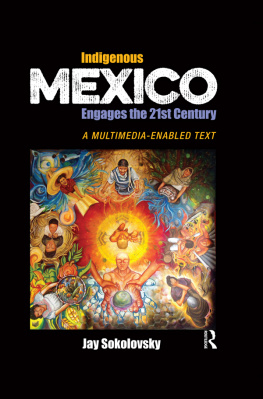
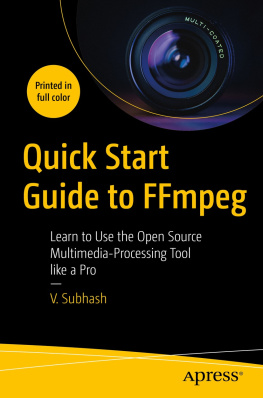

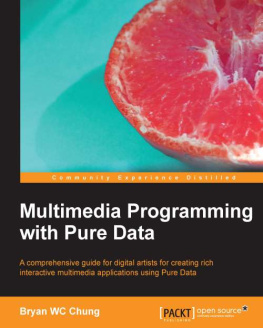
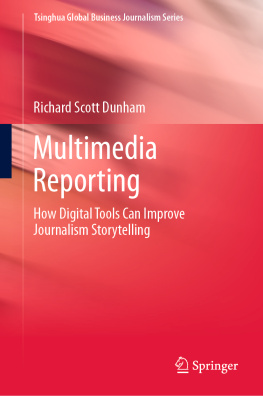

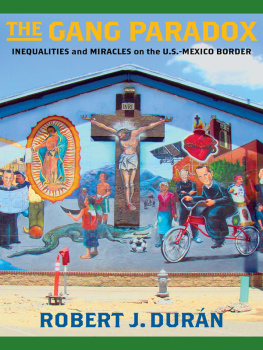

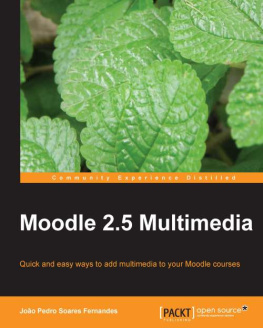
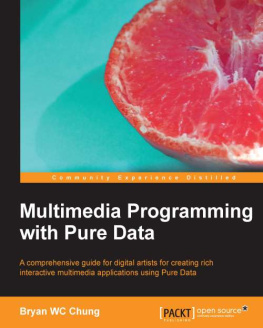

 witness a quinceaera ,
witness a quinceaera ,  listen to the sound of an Aztec Band
listen to the sound of an Aztec Band  and explore the activities of an exciting new cultural center, Centro Cultural Miyotl, with a Power Point module.
and explore the activities of an exciting new cultural center, Centro Cultural Miyotl, with a Power Point module.  There are also Added Value resources such as a video tour of the pre-Hispanic archaeology of the town of Huexotla
There are also Added Value resources such as a video tour of the pre-Hispanic archaeology of the town of Huexotla  southwest of Amanalco. Within the website some chapters will also have questions for readers tying together the print and digital materials, such as in the last slide of a Power Point learning module concerning Amanalcos fading archaeological heritage.
southwest of Amanalco. Within the website some chapters will also have questions for readers tying together the print and digital materials, such as in the last slide of a Power Point learning module concerning Amanalcos fading archaeological heritage.